Nov. 16 update on COVID-19 in MN: New warnings about Thanksgiving as hospitalizations climb
Officials say the winter high school sports season may also need a 'pause'

Go Deeper.
Create an account or log in to save stories.
Like this?
Thanks for liking this story! We have added it to a list of your favorite stories.
Updated: 3:33 p.m.
Gov. Tim Walz and state public health officials are now urging people not to gather for Thanksgiving outside their immediate household and asking college students to reconsider going home for the holiday. The winter high school sports season may also be in jeopardy.
With COVID-19 raging now, Walz and public health authorities made it clear that the current situation is worsening as the virus runs largely unabated across the state.
While the governor expressed hope of a “light at the end of the tunnel” amid news of effective vaccines on the way, he acknowledged the drumbeat of cases, hospitalizations and deaths will continue.
By Thanksgiving, Minnesota could be seeing more than 10,000 new cases reported daily, Minnesota Health Commissioner Jan Malcolm told reporters Monday.
Turn Up Your Support
MPR News helps you turn down the noise and build shared understanding. Turn up your support for this public resource and keep trusted journalism accessible to all.
She called on Minnesotans to celebrate Thanksgiving with people only within their immediate households. That’s different than guidance from last week, but Malcolm on Monday said “the ground is really shifting under our feet and we need to adapt quickly.”
Officials are also urging college students to reconsider traveling home for Thanksgiving.
“It's very risky right now to get together with friends,” Kris Ehresmann, the state’s infectious disease director said. “We strongly discourage travel over Thanksgiving break, especially if you plan to return to campus.”
Ehresmann urged students to take precautions — including masking and social distancing — if they do choose to go home. “Don’t invite COVID-19 to travel home with you.”
Walz called on Minnesotans to take personal responsibility to help stem the disease’s spread, noting that Minnesota will soon pass 300,000 total cases and 3,000 deaths in the pandemic. “That will not be the end. The only question is how bad does it get.”
He signaled that more restrictions on daily life may be coming. That may include winter high school sports.
Officials on Monday said they’ve seen double-digit outbreaks in high school sports, including football, basketball and volleyball. The Health Department is expected to post new guidance on winter sports soon.
“From a health standpoint, we would really like to see sports put on pause,” Malcolm said, noting that health officials were talking now with the Minnesota State High School League.
Record hospitalizations
Monday’s data made clear that COVID-19 continues to rage in Minnesota, pushing hospitalizations and deaths higher with no indications that the situation will improve anytime soon.
The Health Department on Monday reported another 7,444 newly confirmed or probable cases of the disease, another high count following a record two-day increase over the weekend of more than 16,000 new cases.
Hospitalizations continue to climb, with the seven-day new admissions trend hitting a record. More than 1,500 people are in Minnesota hospitals now because of COVID-19 — doubling since Nov. 1 — with more than 300 needing intensive care.
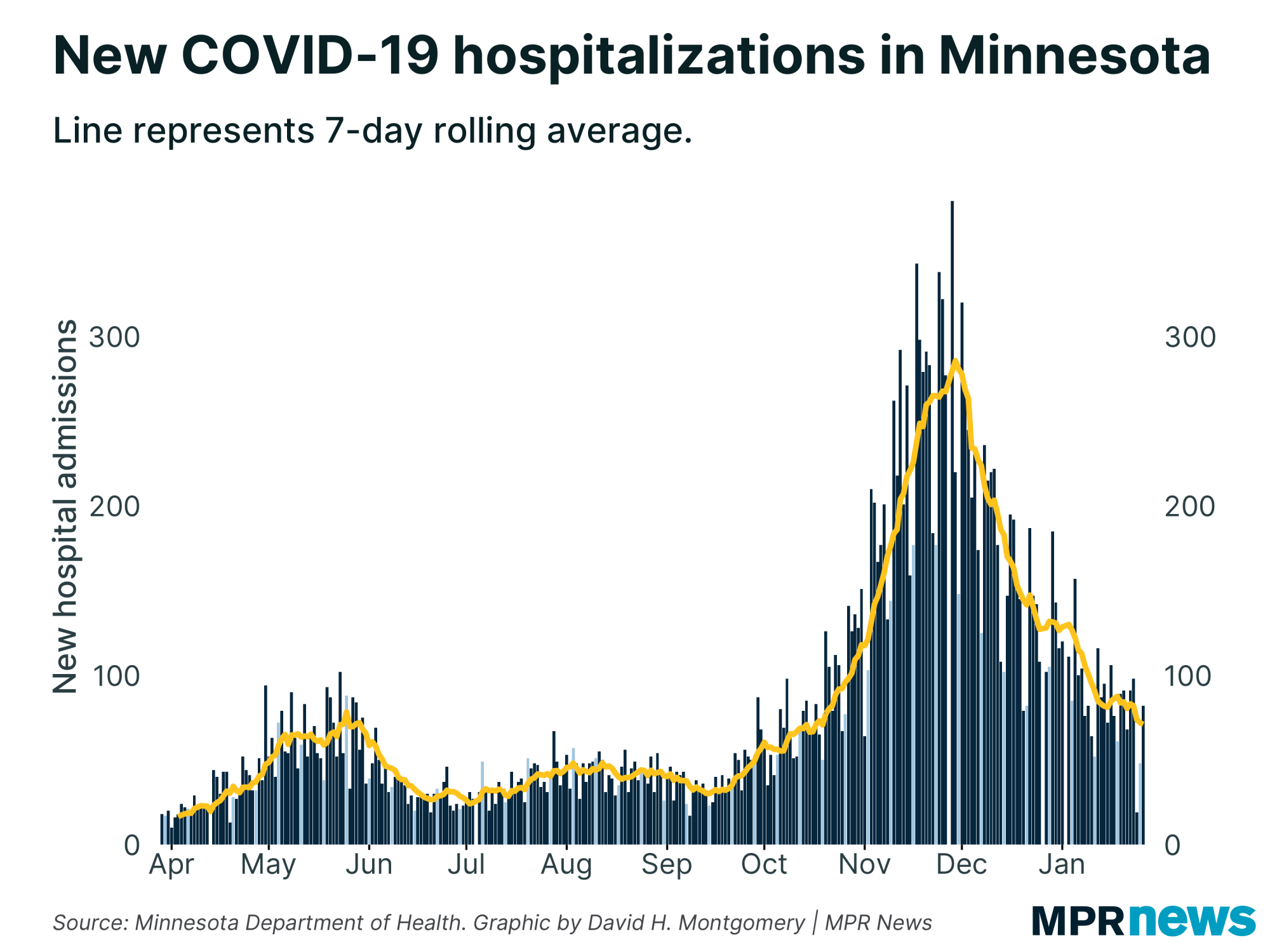
There are more than 48,000 active cases, nearly three times the caseload from two weeks ago.
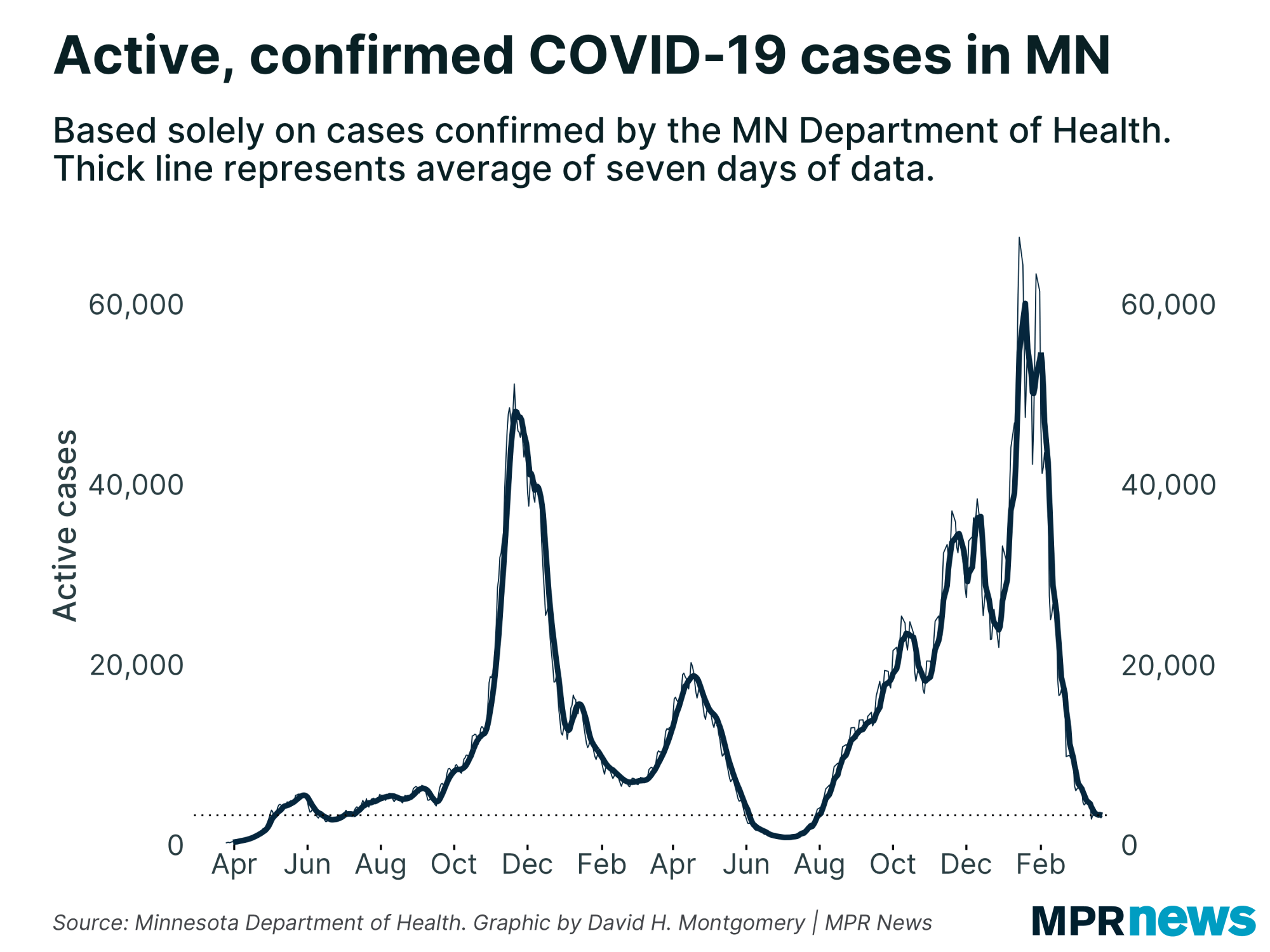
The spiking case count is a signal that hospitalizations and deaths likely will continue to climb in the coming weeks, as those numbers lag behind positive tests.
The uncontrolled spread is being driven now by Minnesotans’ informal gatherings and get-togethers with family and friends where it’s transmitted unknowingly by people who have the virus but do not have symptoms, officials say.
“Our behavior is driving this … literally thousands and thousands of small decisions happening around Minnesota that are the issue here,” Malcolm said recently.
Of the 231,018 confirmed or probable cases identified in the pandemic to date, about 78 percent have recovered to the point they no longer need to be isolated.
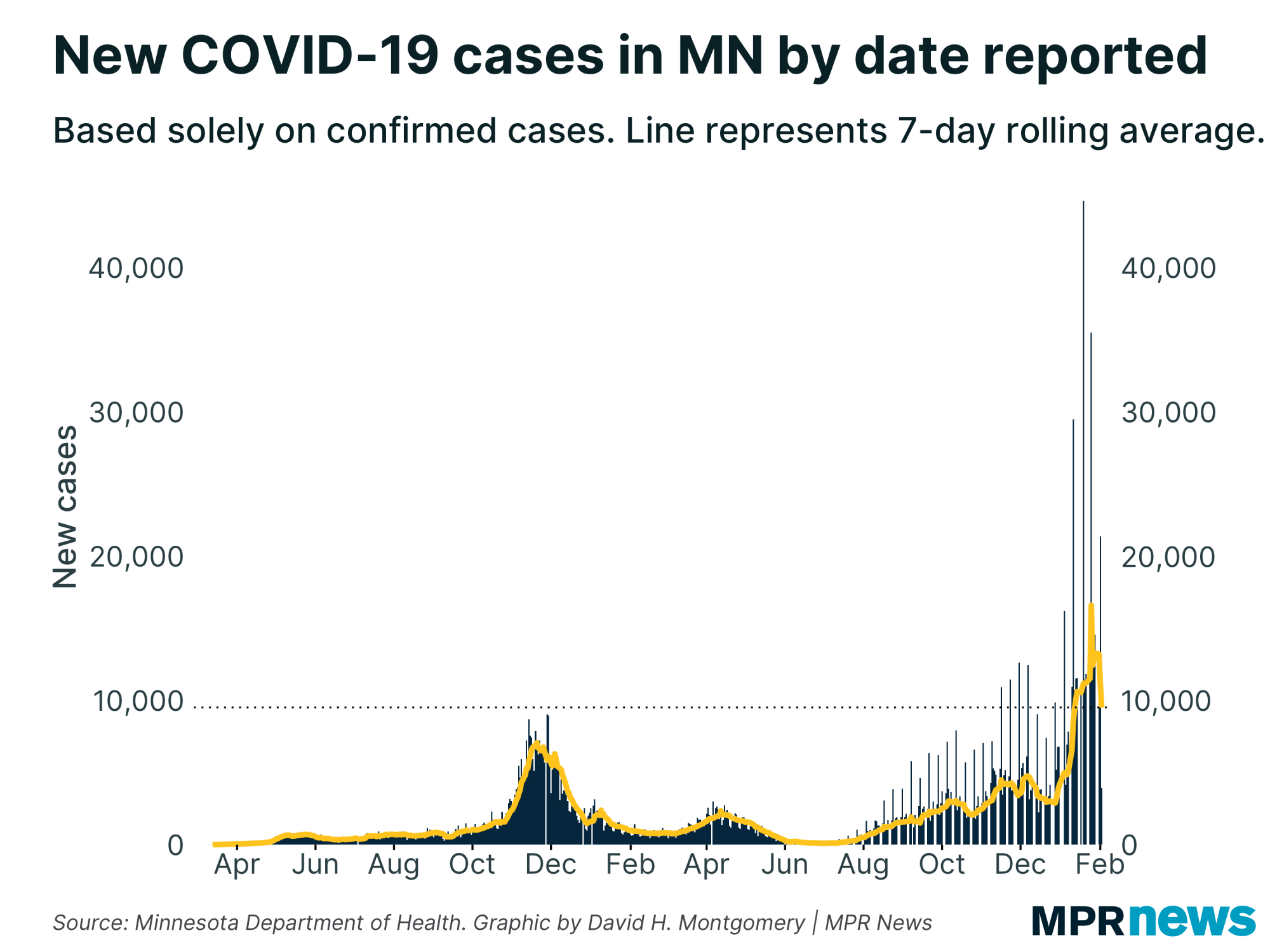
Twelve deaths reported Monday raised Minnesota’s toll to 2,917. Among those who’ve died, about 69 percent had been living in long-term care or assisted living facilities; most had underlying health problems.

Caseloads rising across age groups
New cases have been spiking the past two weeks in all age groups.
People in their 20s still make up the age bracket with the state’s largest number of confirmed cases — more than 47,000 since the pandemic began, including more than 26,000 among people ages 20-24.
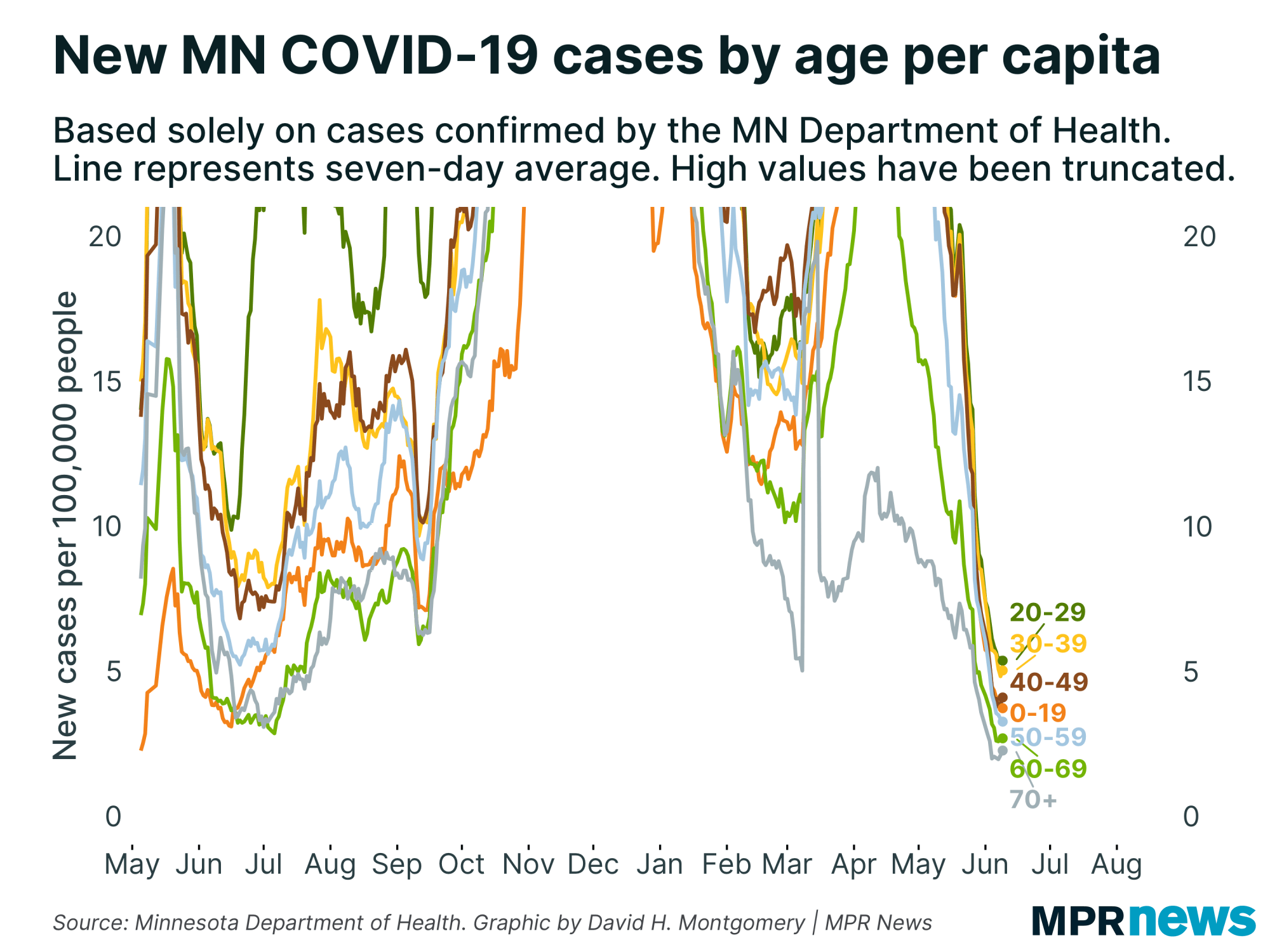
The number of high school-age children confirmed with the disease has also grown, with more than 18,500 total cases among children ages 15 to 19 since the pandemic began.
The numbers help explain why experts remain particularly concerned about teens and young adults as spreaders of the virus.
Although less likely to feel the worst effects of the disease and end up hospitalized, experts worry youth and young adults will spread it to grandparents and other vulnerable populations.
It’s especially concerning because people can have the coronavirus and spread COVID-19 when they don’t have symptoms.
Walz said recently the state has data showing infection rates rising around bar and restaurant activity after 9 p.m. among young adults, noting that people who have the virus but don’t have symptoms are unwittingly spreading it.
Virus surges in swaths of rural Minnesota
Regionally, central and northern Minnesota have driven much of the recent increase in new cases while Hennepin and Ramsey counties show some of the slowest case growth in the state.
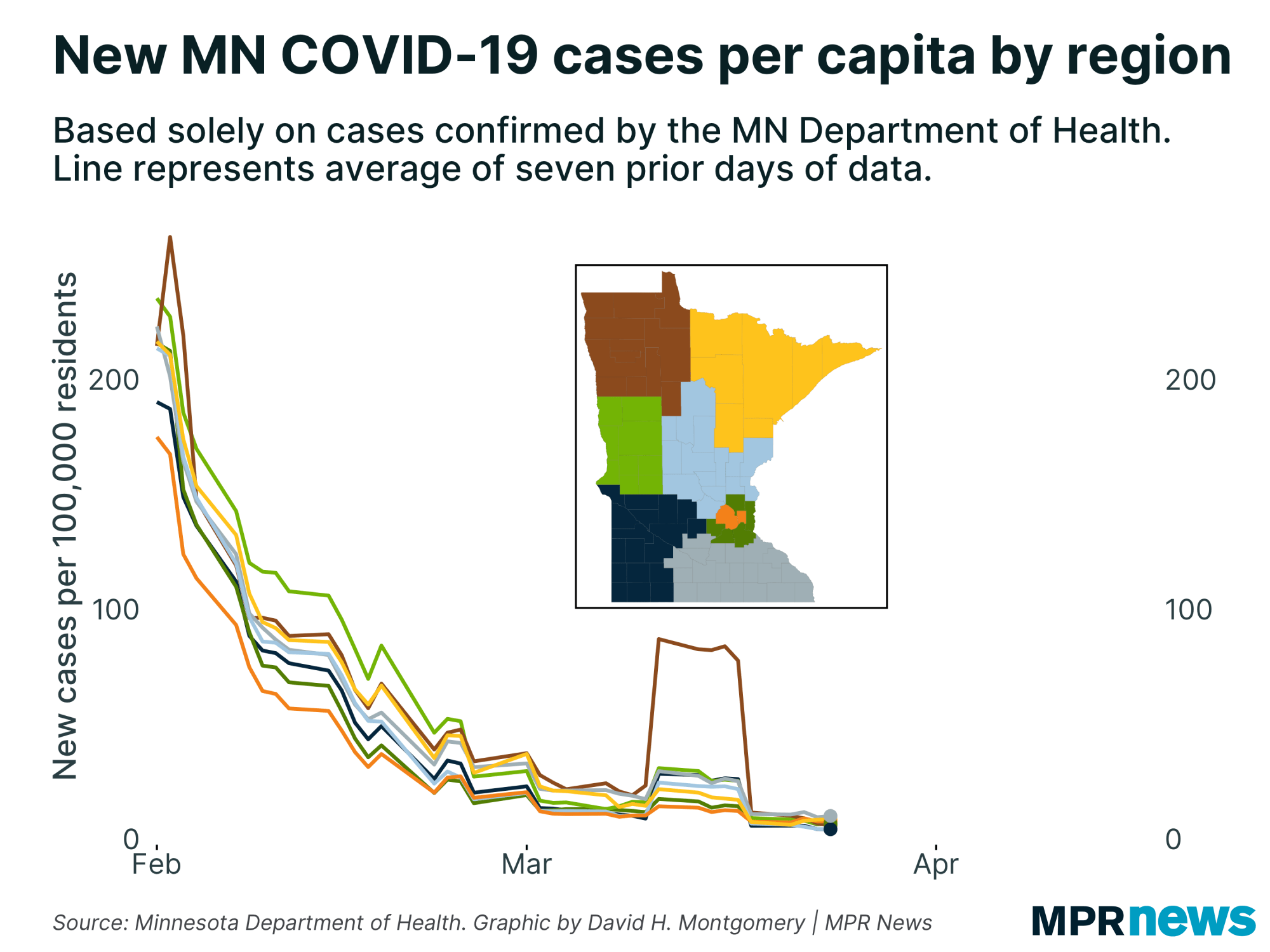
The fastest growing outbreaks are along the state’s western border with the Dakotas, where the virus is spreading unchecked. But new cases are rising at accelerating rates everywhere in Minnesota.
Collectively, rural areas continue to report the most new COVID-19 cases per capita.
Northern Minnesota, once the region least affected by the disease, has also seen its caseload grow dramatically in recent weeks.
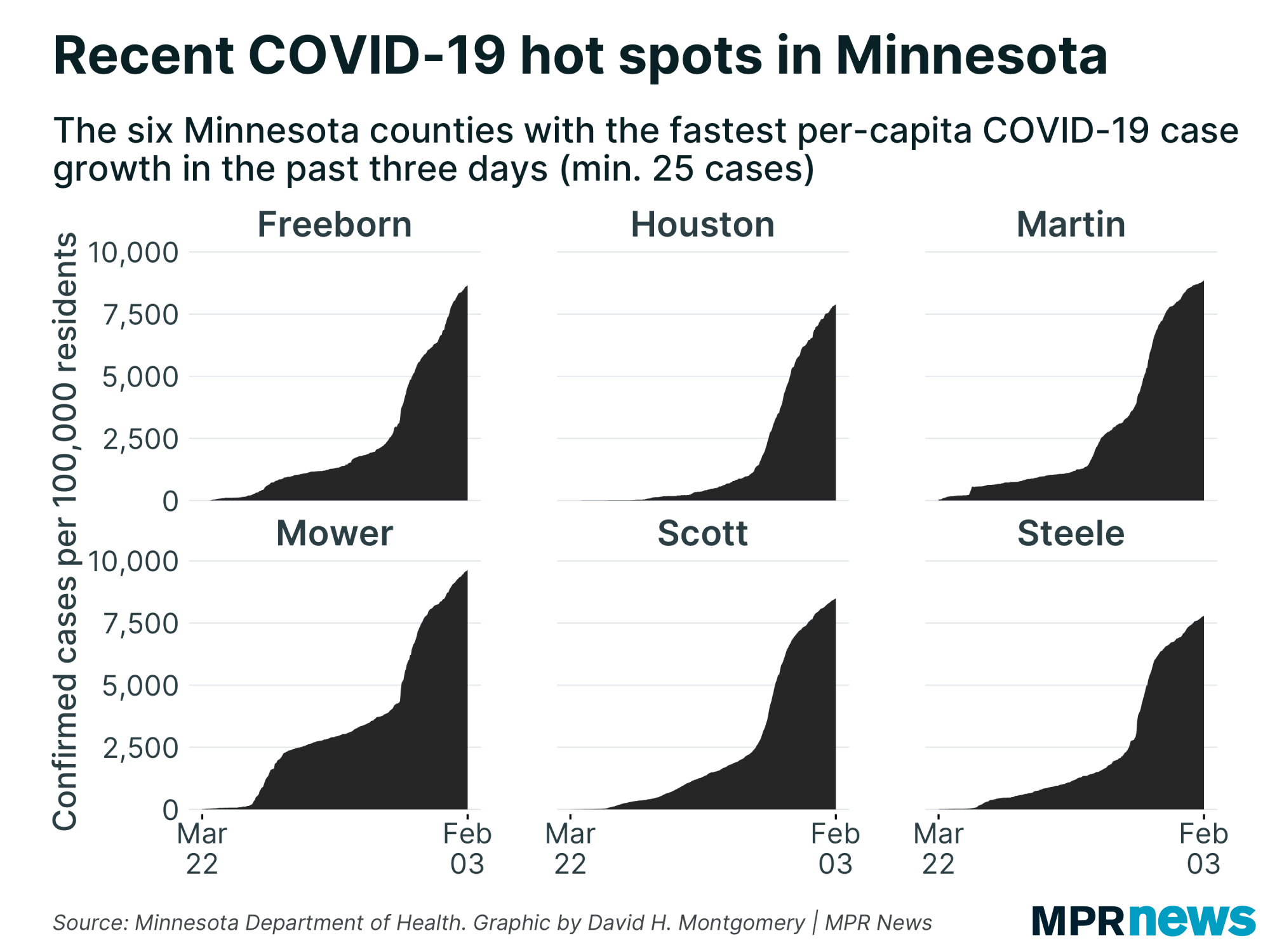
Latino cases climb
In Minnesota and across the country, COVID-19 has hit communities of color disproportionately hard in both cases and deaths. That’s been especially true for Minnesotans of Hispanic descent for much of the pandemic.
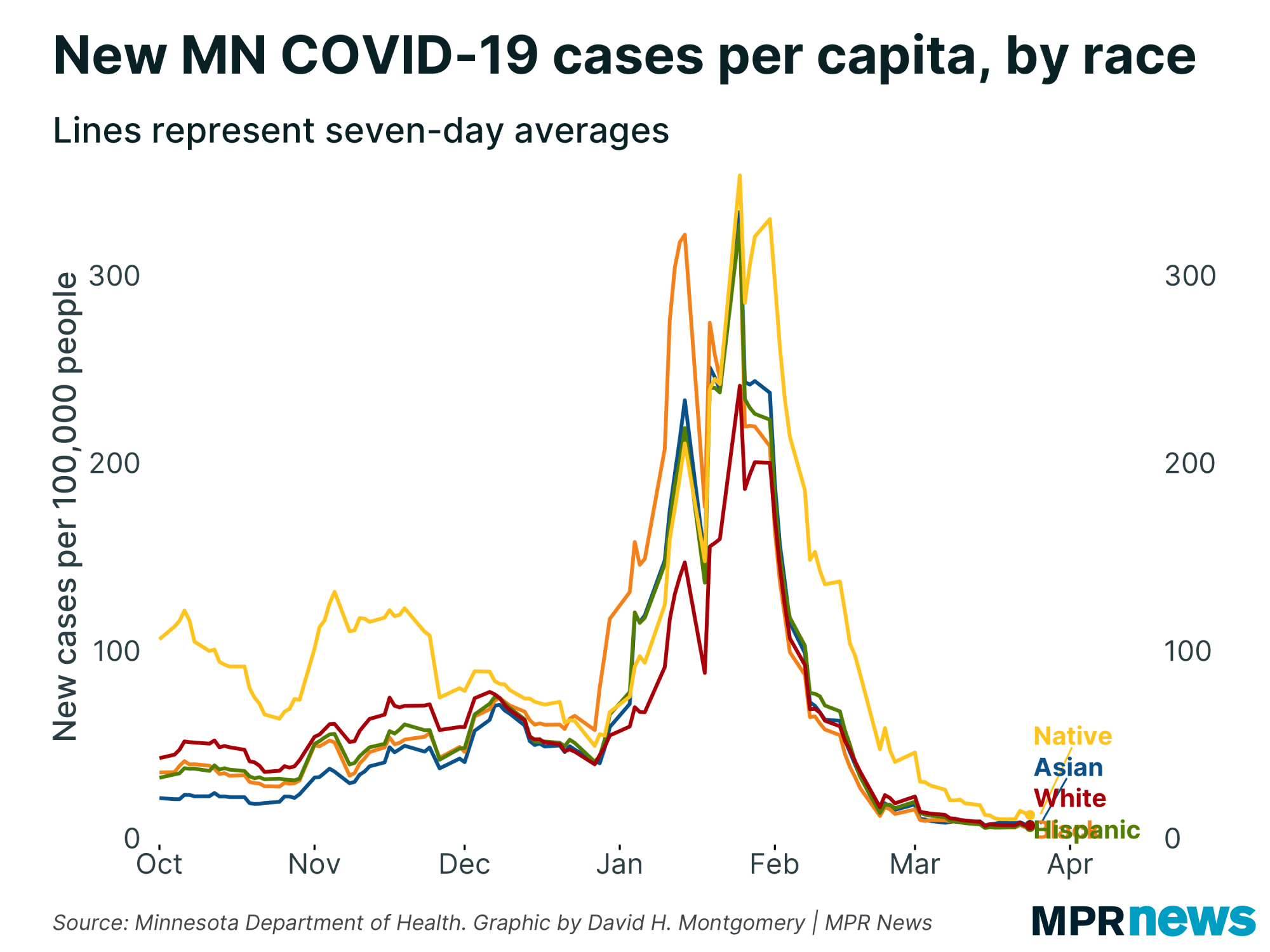
Distrust of the government, together with deeply rooted health and economic disparities, have hampered efforts to boost testing among communities of color, officials say, especially among unauthorized immigrants who fear their personal information may be used to deport them.
Similar trends hold true for Minnesota’s Indigenous residents. Counts among Indigenous people jumped in October relative to population.
Cases among all races and ethnicities continue to rise, although currently the growth is slowest among Black Minnesotans, who reported the most new COVID-19 cases per capita for much of the spring and summer.
‘So much community spread’
The overall numbers continue to paint a troubling picture of a rapidly worsening pandemic in Minnesota not limited to just one region or demographic group, like earlier in the pandemic.
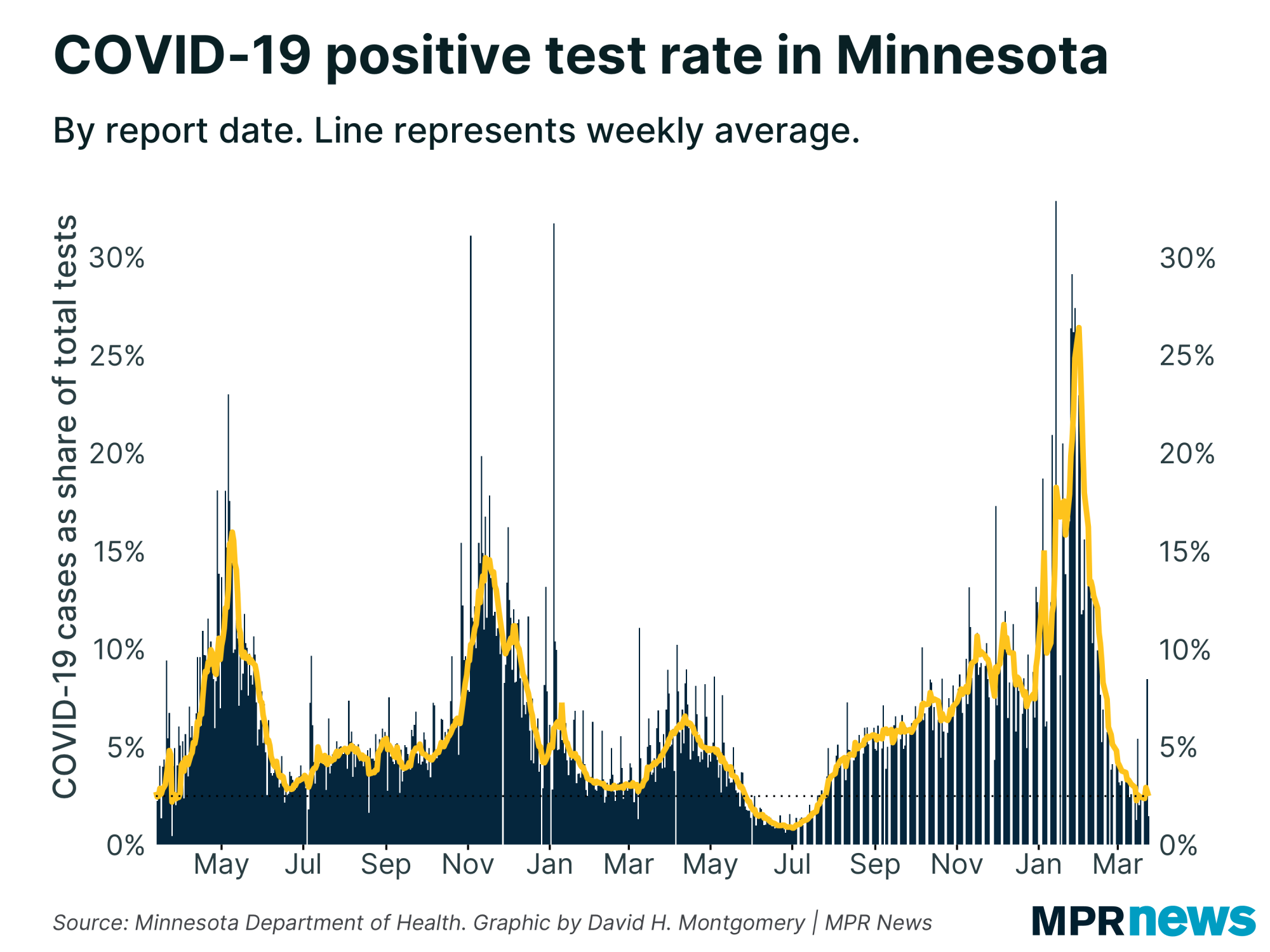
There’s increasing concern about the ability of hospitals to handle more. Staffing is becoming a challenge as more health care workers get sick.
COVID-19 is taking a toll on hospital staffing, making care more difficult to provide, even as demand grows. The trends indicate the situation will get much worse in the near future Malcolm told MPR News early Monday.
“We know that hospitalizations lag by about two weeks from, or possibly more than two weeks behind the cases. So the hospitalizations we’re seeing today are based on cases that were one-third of what we’re seeing today,” she said.
Walz on Friday signaled that more restrictions on daily life may be needed as the pandemic continues to rage in Minnesota, with the worst still to come. “I think more changes will probably have to happen,” he told reporters.
While a complete lockdown of the state’s economic and social life was unlikely, the governor indicated more moves may be coming beyond his latest order closing bars and restaurants to indoor service after 10 p.m., which kicked in Friday night.
On Monday, Walz made clear that more restrictions on daily life were needed and coming. “It’s obvious we’re going to have to do more mitigation measures.”
Developments around the state
Health Department to start tracing efforts with texts
Beginning Monday, people who have tested positive for COVID-19 or who have been in contact with a positive case will be notified by text before receiving a phone call from a contract tracer.
The hope is to increase the rate of answered or returned phone calls to contact tracers. The text will include the contact tracer’s number.
“The idea is to more effectively reach and inform those who test positive for COVID-19 and their close contacts about what they need to do to prevent further spread and to better protect the state’s most vulnerable populations through improved outreach and communication,” Health Commissioner Jan Malcolm said Friday.
— MPR News Staff
Top headlines
New Minn. fund will help families of front-line workers killed by COVID: Frontline Families Fund aims to provide scholarships and grants to families of every health care worker across the country who has died from COVID-19.
New COVID-19 antibody treatment makes its way to Minnesota: Last week, the FDA gave an emergency use authorization to a drug designed to prevent people with mild or moderate cases of COVID-19 from getting sicker. In Minnesota, Mayo Clinic is among the health care systems preparing to administer it to patients.
As hospitals fill, staffing becomes biggest challenge: As COVID-19 patients flood their hallways, hospitals are shifting and shuffling employees and space to accommodate a growing number of patients. It’s a strategy that carries risks for patients and employees.
Minnesota Senate Majority Leader Gazelka tests positive for COVID-19: The Republican majority leader of the Minnesota Senate has tested positive for COVID-19, and is facing calls from the DFL minority to resign his leadership post over his handling of an outbreak affecting the GOP caucus.
North Dakota mandates masks, capacity limits as virus surges: North Dakota Gov. Doug Burgum ordered a statewide mask mandate and imposed several business restrictions late Friday in an effort to contain the spread of the coronavirus that has stressed the state’s hospital capacity.
A guide to navigating Thanksgiving and COVID-19: At a time when everyday decisions can be fraught with risk and worry, planning for the holidays is no exception. Health officials offer some suggestions for how to frame your next family gathering.
COVID-19 in Minnesota
Data in these graphs are based on the Minnesota Department of Health's cumulative totals released at 11 a.m. daily. You can find more detailed statistics on COVID-19 at the Health Department website.


